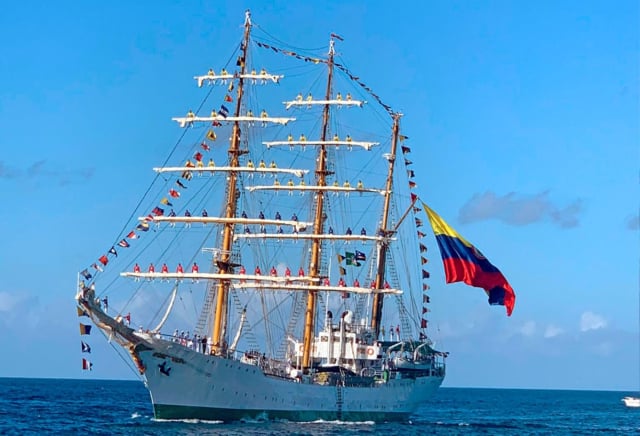Ships are large vessels designed to navigate oceans, seas and large rivers, and their main function is the transportation of people, goods and resources. Throughout history, ships have evolved significantly, from primitive rafts and canoes to modern ocean liners and container ships . These giants of the sea are fundamental to global trade, allowing the large-scale exchange of goods between continents. In addition to their commercial importance, ships also play crucial roles in military, scientific and recreational activities , demonstrating their versatility and relevance in various areas of human life.
In the commercial field, ships are the pillar of maritime transport, one of the most efficient and economical ways to move large volumes of goods across the world. Container ships, for example, can transport thousands of containers filled with products ranging from food to electronics, connecting markets and facilitating international trade . Likewise, oil and gas tankers transport fossil fuels essential for global energy, while bulk carriers move raw materials such as coal and minerals. Without these ships, the global economy would be severely affected, as a large part of international trade depends on maritime transport.
In addition to their role in commerce, ships have strategic importance in the military field . Since ancient times, navies have used ships to protect their coasts, project power and secure crucial shipping routes. Today, modern naval fleets are composed of a variety of ships, including aircraft carriers, destroyers and submarines , equipped with advanced technology to fulfill various defense and security missions. These ships not only guarantee national security, but also participate in peace, rescue and humanitarian aid operations around the world.
On the other hand, ships are also essential for exploration and scientific research . Oceanographic vessels, equipped with laboratories and advanced technology, allow scientists to study the seabed, marine life and ocean phenomena , contributing to the knowledge and conservation of the oceans. Additionally, polar research vessels facilitate the study of the Arctic and Antarctic regions, providing valuable data on polar climate and ecosystems. Finally, recreational vessels, such as cruise ships , offer unique travel and entertainment experiences, allowing people to explore the world from a different perspective .
You may also be interested in: Intercontinental navigation
Types of Vessels
- Container Ships
Container ships are specifically designed to transport standard intermodal containers, which can be easily loaded and unloaded using cranes at specialized ports. These ships have revolutionized global trade, allowing the efficient and safe transportation of a wide variety of goods , from electronic products to perishable foods. The capacity of container ships is measured in TEUs (Twenty-foot Equivalent Units), and the largest can transport more than 20,000 TEUs in a single trip . These vessels are crucial to the global supply chain, facilitating the continuous flow of goods between continents and reducing transportation costs.
- Oil Tankers
Oil tankers, also known as tankers , are designed to transport large volumes of crude oil and its derivatives . There are several types of tankers, including VLCCs (Very Large Crude Carriers) and ULCCs (Ultra Large Crude Carriers), which can carry up to 320,000 and 550,000 metric deadweight tons (DWT), respectively. These vessels play a critical role in the global energy industry, transporting oil from producing regions to refineries and consumer markets. Its design includes special compartments to minimize the risk of spills and secure cargo safely and efficiently.
- Bulk Vessels
Bulk carriers are designed to transport dry bulk cargoes, such as minerals, coal, grains and cement . These ships have large cargo holds that can be filled and emptied using specialized loading and unloading systems. Bulk carriers are essential to the mining and agricultural industries , facilitating the transportation of raw materials from production areas to processing and consumption centers. The capacity of these vessels is measured in DWT, and the largest, known as capesize, can carry more than 200,000 DWT.
You may also be interested in: Sailboat
- Ro-Ro Vessels (Roll-on/Roll-off)
Ro-Ro vessels are designed to transport vehicles and machinery that can be rolled directly on and off the vessel. These vessels have internal and external ramps that allow quick and easy access to cargo . Ro-Ro are widely used for the transport of cars, trucks, buses and other heavy vehicles , as well as construction equipment and agricultural machinery . Its design allows efficient loading and unloading, reducing the time spent in port and operating costs.
- Cruise Ships
Cruise ships are designed to offer a luxury travel experience and entertainment on the high seas. Equipped with multiple decks , these ships feature a variety of facilities, such as swimming pools, restaurants, theaters, casinos and shops . Cruise ships can accommodate thousands of passengers and offer itineraries that visit tourist destinations around the world . In addition to providing transportation, cruise ships are vacation destinations in themselves, offering a wide range of activities and services for passengers . Its design focuses on comfort and safety, with advanced stabilization and navigation systems.
- Oceanographic Vessels
Oceanographic vessels are equipped with laboratories and advanced technology for marine scientific research . These vessels are used by oceanographers and other scientists to study the seabed, marine life, ocean currents, and other natural phenomena. Equipped with sonars, remotely operated vehicles (ROVs) and sampling equipment , oceanographic vessels are essential for ocean exploration and monitoring. In addition, these ships contribute to the conservation of marine ecosystems and the understanding of global climate changes.
You may also be interested in: Submersible boats
- Warships
Warships, also known as combat ships , are designed for military operations at sea . These include a variety of types, such as aircraft carriers, destroyers, frigates, and submarines. Aircraft carriers are large ships that serve as a mobile base for fighter jets and helicopters , allowing air operations on the high seas. Destroyers and frigates are smaller ships, designed for anti-aircraft, anti-submarine and surface defense. Submarines, for their part, are capable of operating covertly underwater , carrying out reconnaissance, attack and nuclear deterrence missions. These vessels are essential for power projection and national security .
- Fishing Vessels
Fishing vessels are designed for the capture and processing of fish and other marine resources . There are several types of fishing vessels, including trawlers, longliners and purse seiners , each specializing in different fishing methods. These vessels are equipped with nets, fishing lines and refrigeration systems to keep the catch fresh . Fishing vessels play a vital role in the fishing industry, supplying food to local and international markets . In addition, some fishing vessels are also equipped for aquaculture and shellfish harvesting.
We invite you to take a look at other articles at: https://yate.co/es/blog


